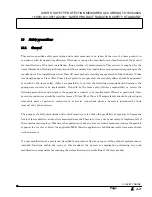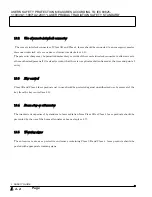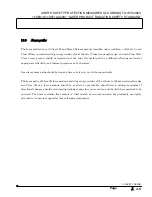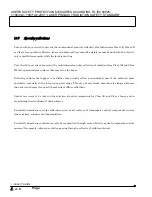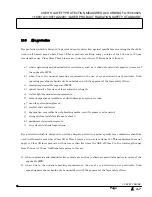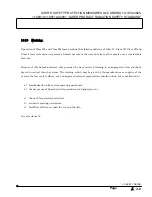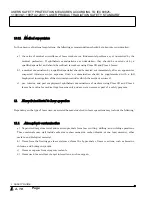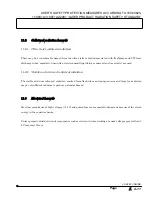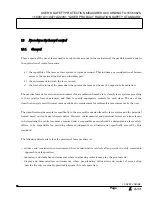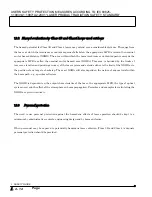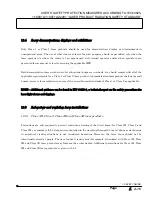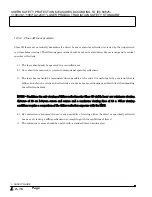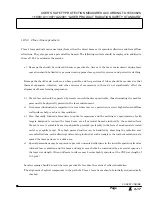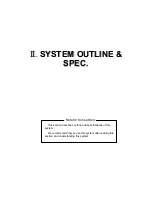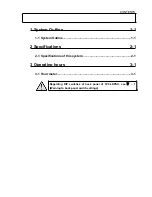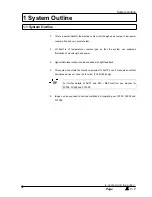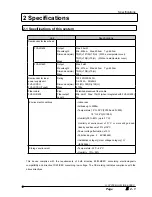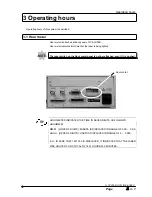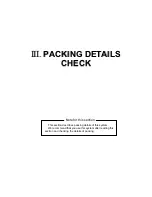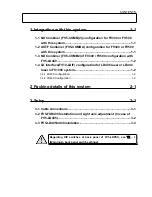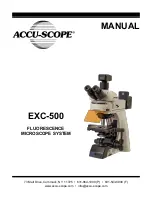
USER’S SAFETY PROTECTION MEASURES ACCORDING TO IEC60825-
1:1993+A1:1997+A2:2001 “LASER PRODUCT RADIATION SAFETY STANDARD”
I.
SAFETY GUIDE
I .
4 - 1 7
Page
12.5.3
Class 4 laser products
Class 4 laser products can cause injury from either the direct beam or its specular reflections and from diffuse
reflections. They also present a potential fire hazard. The following controls should be employed in addition to
those of 12.5.2 to minimize these risks.
a) Beam paths should be enclosed whenever practicable. Access to the laser environment during laser
operation should be limited to persons wearing proper laser protective eyewear and protective clothing.
Beam paths should avoid work area where possible, and long sections of tubes should be mounted so that
thermal expansion, vibration, and other sources of movements in them do not significantly affect the
alignment of beam forming components.
b) Class 4 lasers should be operated by remote control whenever practicable, thus eliminating the need far
personnel to be physically present in the laser environment.
c) Good room illumination is important in areas where laser eye protection is worn. Light-coloured diffuse
wall surfaces help to achieve this condition.
d) Fire, thermally Induced aberrations in optical components and the melting or vapourization of solid
targets designed to contain the laser beam, are all potential hazards induced by the radiation from
Class 4 lasers. A suitable beam stop should be provided, preferably in the form of an adequately cooled
metal or graphite target. Very high power densities can be handled by absorbing the radiation over
several reflections, each reflecting surface being inclined at such an angle to the incident radiation as to
spread the laser power over a wide area.
e) Special precautions may be required to prevent unwanted reflections in the invisible spectrum from far
infra-red laser radiation and the beam and target area should be surrounded by a material opaque at
the laser wavelength. (Even dull metal surfaces may become highly specular at the CO2 wavelength of
10,5
m
P
).
Local screening should be used wherever practicable to reduce the extent of reflected radiation.
The alignment of optical components in the path of a Class 4 laser beam should be initially and periodically
checked.
Summary of Contents for FV5-LD405
Page 2: ......
Page 8: ......
Page 10: ......
Page 20: ......
Page 22: ......
Page 40: ......
Page 42: ......
Page 44: ......
Page 46: ......
Page 48: ......
Page 50: ......
Page 52: ......
Page 54: ......
Page 62: ......
Page 64: ......
Page 66: ......
Page 74: ......
Page 76: ......
Page 78: ......
Page 80: ......
Page 82: ......
Page 84: ......
Page 86: ......
Page 90: ......
Page 91: ......

